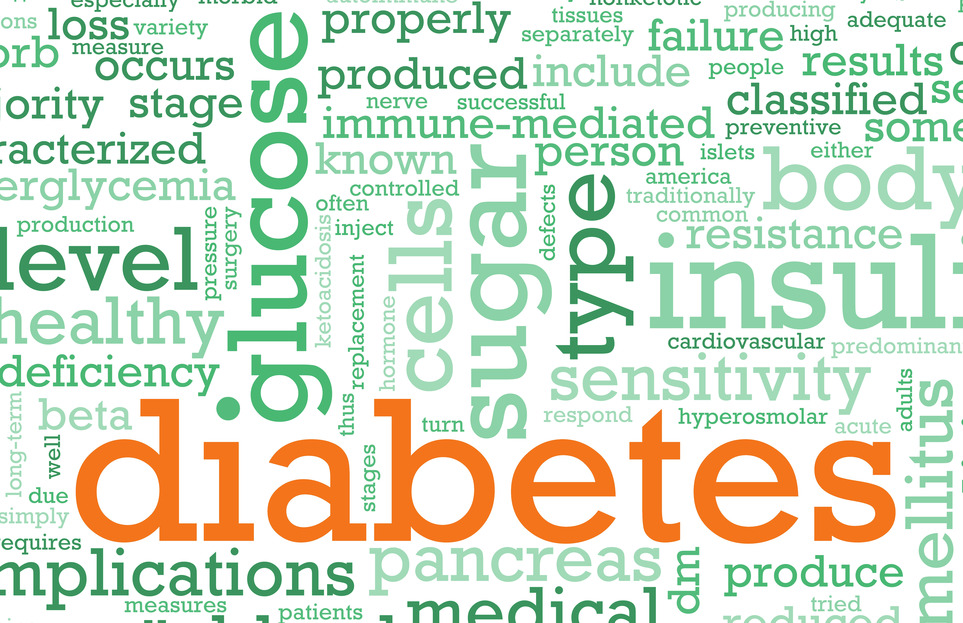What is diabetes?
Pre-diabetes
Pre-diabetes is the precondition for type 2 diabetes. People that have pre-diabetes have blood glucose levels that are higher than normal but are not quite high enough to result in a full diagnosis of diabetes.
This is the “best opportunity” to reduce the risks associated with diabetes. Through a proper diet, exercise, and approach to the situation, some people with pre-diabetes are able to actually return blood glucose levels to normal before they reach a type 2 diabetes diagnosis. Studies have found that the risk for type 2 diabetes can be reduced up to 58% by:
- Losing 7% of your body weight (or 15 pounds if you weigh 200 pounds)
- Exercising moderately (such as brisk walking) 30 minutes a day, five days a week1
Type 1 diabetes
If you have type 1 diabetes, your pancreas does not produce insulin at all. Without insulin, your cells are unable to absorb the sugar (glucose) from the foods you eat and turn it into energy for your body. In order to survive, type 1 diabetics must take insulin daily. Type 1 diabetes is usually only diagnosed in children and young adults.
Only 5% of people with diabetes have type 1 diabetes and with the help of insulin therapy and/or other treatments, many learn to manage the condition and live long, happy lives.
Type 2 diabetes
The most prevalent type of diabetes is Type 2 diabetes.
With type 2 diabetes, your body does not make or use insulin well. In a relatively short amount of time, the pancreas makes up for this by producing even more insulin.
Over time, though, this overproduction results in a pancreas that can’t keep up and can’t make enough insulin to keep your blood glucose levels normal.
How many seniors are affected by diabetes?
According to the CDC, among people in the United States that are age 65 years or older, 10.9 million, or 26.9% of the population in this group, have diabetes. Many of those are undiagnosed.2
Why does it matter if you treat your diabetes?
There are many reasons to take action and treat your diabetes, some of the main reasons include:
- Having more energy
- Heal faster
- Have fewer infections
- Enjoy a better quality of life
- Reduce your risks of a heart attack
- Reduce your risks of a stroke
- Reduce diabetes related eye problems (that can lead to blindness)
- Reduce your risks of pain, tingling, and/or numbness of the hands and feet (otherwise known as nerve damage)
- Reduce your risks of kidney problems
- Reduce your risks of diabetes related teeth and gum problems
Managing diabetes in older adults and seniors
Here are some quick, simple, and easy to follow steps to managing diabetes in older adults and senior citizens:
Know your ABCs
A – A1C Test
The A1C test is a blood test performed by your doctor that measures your average blood sugar level over the past three months. This test should not be confused with the daily tests you do yourself.
The A1C goal for most people with diabetes is below 7. Don’t rely on this for yourself, though, as everyone is different. Ask your doctor what yours should be.
B – Blood pressure
Your blood pressure is a measurement of the force of your blood against the wall of your blood vessels. If your blood pressure gets too high, it makes your heart work too hard and can cause a heart attack, stroke, and/or kidney disease/failure.
Most normal blood pressure should be below 140/80, but your doctor should give you a number that is appropriate for your condition.
C – Cholesterol
Managing your cholesterol is critical to managing your diabetes. There are two types of cholesterol to measure and track (HDL – good, and LDL – bad):
- LDL, or “bad” cholesterol can build up and clog your blood vessels. This clogging increases blood pressure and your risk of a heart attack and/or stroke. Lower is better, but be sure to ask your doctor what your LDL level should be.
- HDL, or “good” cholesterol helps prevent the risks associated with your LDL level by helping to remove LDL from your blood vessels.
Manage stress
Stress has been found to cause many adverse health conditions, and can raise your blood sugar levels. Stress is also one of the simplest things to manage.
Learn to take advantage of many stress management techniques:
- Deep breathing
- Gardening
- Taking a walk
- Meditating
- Working on a hobby
- Listening to music that is relaxing
- Reading a good book
- Avoiding watching the news
- Taking care of a pet
Talk to someone
Coping with diabetes can be depressing, which in turn can cause your diabetes to worsen. If you feel down, reach out and speak with someone about your concerns and situation, like:
- A mental health counselor
- Your doctor
- Your nurse
- Your caregiver
- Your family
- A support group
- A member of the clergy
- A close friend
Eat well
Admittedly easier said than done, your diet and nutrition is critical to successfully managing diabetes in older adults. Work with your dietitian, nurses, doctor or nutrition coach to:
- Put together a personalized diabetes meal plan with help from your home health nurse, dietitian, nutritionist, or health care team.
- Eat foods low in calories, saturated fat, transaturated fat, sugars, and sodium.
- Eat high-fiber foods, like whole grain cereals, whole grain breads, whole grain crackers, wild or brown rice.
- Eat (organic if possible) vegetables, fruits, and low-fat or skim-milk and cheese.
- Instead of soda, drink juice. Instead of juice, drink water.
- Ask your health professional what the appropriate proportion of proteins, fats, and carbohydrates you should consume.
If you have specific food allergies, or you just aren’t sure where to start with eating well, be sure to ask your healthcare provider for assistance.
Be active and exercise
Exercise doesn’t have to mean doing 30 high speed minutes on a treadmill. Start small. Try some of these simple exercises and activities to keep moving:
- 10 minute walks, 3 times a day
- Twice a week, increase your muscle strength with:
- Stretch bands
- Yoga
- Heavy gardening (digging and planting)
- Knee pushups
- Regular pushups
- When you have an opportunity to get up and move, get up and move!
Have an action plan for every day
Perhaps the biggest challenge to managing diabetes in older adults is the stress of keeping up with everything. By having an action plan ready to go, that you can reference and use every day, you can reduce the stress of managing your diabetes and enjoy life. Here are some things to keep in mind for your plan:
- Take medicines as prescribed.
- Tell your doctor if you can’t afford medications.
- Tell your doctor, nurse, or health professional if you have any side effects.
- Check your feet every day for:
- Cuts
- Blisters
- Red spots
- Swelling
- If you have any sores that don’t heal quickly, call your nurse or health team immediately.
- Brush your teeth and floss daily, after each meal.
- Stop smoking or ask for help to quit smoking. Call 1-800-QUIT-NOW (1-800-784-8669).
- Track your blood sugar daily or multiple times per day. Keep a written log of your blood sugar levels. Share these with your nurse and healthcare providers.
- Track your blood pressure as often as necessary and keep a written log.

